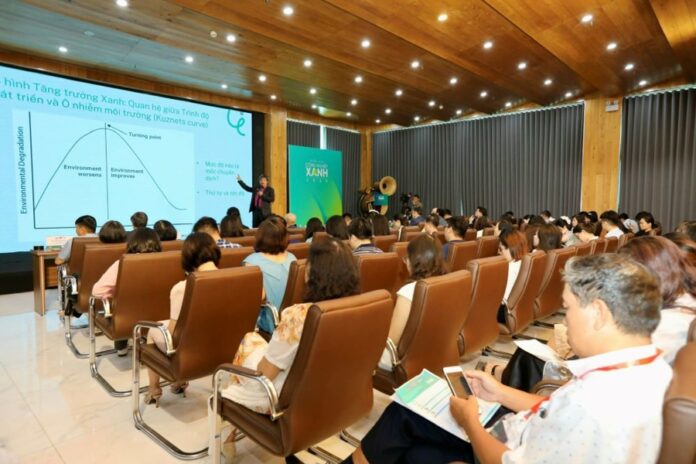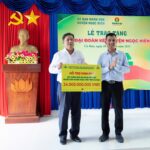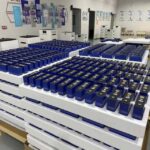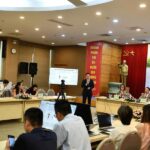At the “Green Industry: Harmonizing High Growth and Sustainable Development” forum organized by Vietnam Economic Times on July 9, 2025, Mr. Nguyen Ba Hung, ADB’s Chief Economist in Vietnam, shared his insights on green growth and the trade-off approach. He emphasized that we are living in an era of great advancement, where green growth and sustainable development offer significant opportunities. However, it is crucial to understand how these opportunities are shaping up, along with the accompanying challenges and risks.
THE CONTEXT OF GLOBAL CLIMATE CHANGE
Clarifying the concept of green growth, Mr. Hung mentioned that there are currently various approaches and no unified definition globally. Organizations like the United Nations, OECD, and the Global Green Growth Institute (GGGI) have their distinct perspectives.
“In Vietnam, I refer to the definition provided in the National Strategy for Green Growth, which emphasizes three key aspects: changing the growth model by restructuring the economy instead of relying on traditional development methods; adopting advanced technology and modern infrastructure; and efficient utilization of natural resources, reducing greenhouse gas emissions, and adapting to climate change,” Mr. Hung shared.
Delving into the scientific basis and global context of green growth, Mr. Hung presented a diagram illustrating the average surface temperature of the Earth over the past 100 million years. Generally, the temperature has been decreasing and stabilizing over the last 10,000 years, creating favorable conditions for human habitation and development. However, since 1850, the onset of industrialization, human activities, particularly the extraction and use of fossil fuels, have disrupted the ecological balance by releasing vast amounts of carbon dioxide into the atmosphere, leading to climate change.
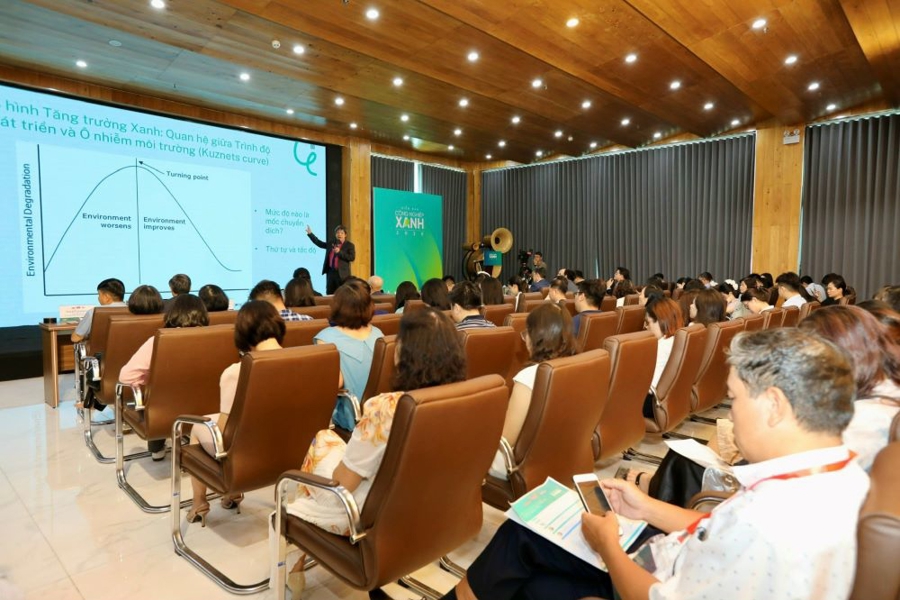
At COP26, the world set a target to keep the global temperature rise below 1.5°C compared to pre-industrial levels, but the most realistic goal now is to stay below 2°C, which is already a challenging target.
If the current trends persist, the Earth’s average temperature will surpass the “safe limit,” endangering human existence. This scientific understanding underscores the urgency of embracing green growth and sustainable development.
THE “DECOUPLING” MODEL IS NO LONGER FEASIBLE
The concept of “decoupling” economic growth from resource depletion and environmental damage is a core element of the green growth model. According to Mr. Hung, it was once assumed that economic growth inevitably led to increased resource extraction and environmental harm. However, this model is no longer viable, as continuing down this path would incur substantial long-term costs for the economy. The goal of green growth is to achieve high growth rates while reducing resource consumption and environmental damage.
Mr. Hung provided an illustration: if the scale of the economy doubles, resource utilization does not necessarily double but can increase by just 20-30% through the application of technology, process innovation, and improved efficiency.
This shift represents a transition from a linear growth model to a circular economy, from development with trade-offs to development without them.
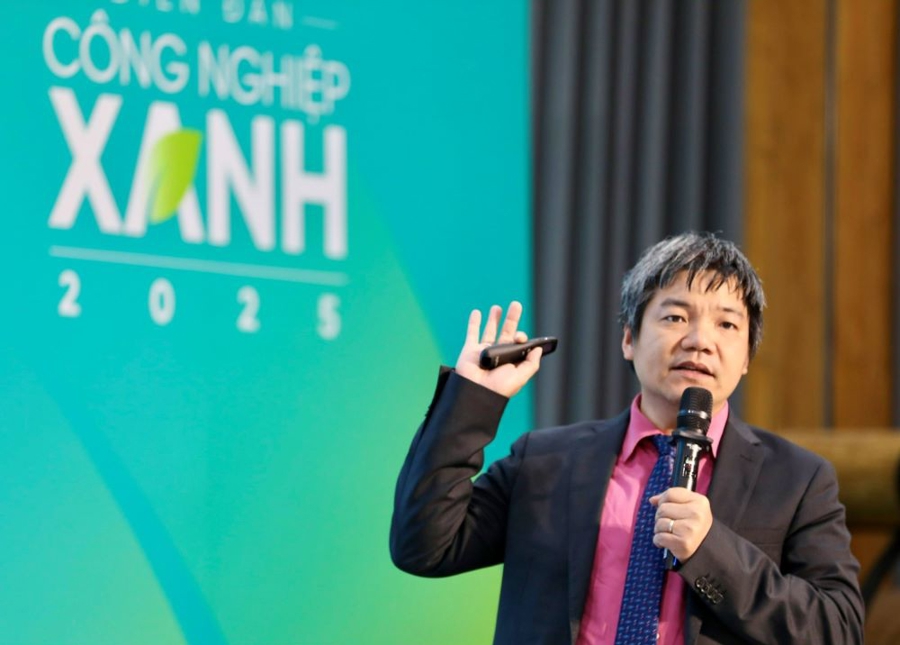
“One of the significant challenges in promoting green growth is technology. If we continue to rely on outdated technology, increasing output will necessitate a corresponding increase in inputs, resulting in greater resource consumption. Achieving growth without a proportional or slower increase in inputs requires technological advancements. What we need are more efficient technologies that utilize fewer resources.”
A classic example is the energy sector: before the oil crisis in the 1970s, oil-utilizing technology was inefficient. When oil prices soared (from under $10 to $70-100 per barrel), cost pressures drove industries to innovate, significantly reducing fuel consumption per unit of output.”
From an environmental perspective, the old model would lead to increased environmental damage with growth. However, we now have the opportunity not just to reduce harm but also to positively impact the environment through green technologies. This means that instead of harming the environment, businesses can contribute to its restoration or improvement, such as waste management and air pollution reduction,” said Mr. Hung.
Mr. Hung presented a graph illustrating the relationship between technological progress and long-term growth potential. The analysis showed that with the same amount of resources, better technology could yield higher output. The current production boundary reflects the limitations of growth with existing technology. By innovating, we can push this boundary outward, creating new growth potential. Thus, to achieve high and sustainable growth, it is imperative to expand the production boundary.
During the low-income phase, growth often comes at the expense of the environment due to technological limitations. However, once the transition threshold is crossed, it becomes possible to increase income while reducing environmental impact. This presents an opportunity for green growth.
“Vietnam is approaching this transition threshold, entering the upper-middle-income range, estimated at $4,000–4,500 per capita per year. This means we are poised to enter a phase of green and sustainable growth if we have the right policy, technological, and investment conditions,” affirmed Mr. Nguyen Ba Hung.
INTERNATIONAL COMPARISON: WHERE DOES VIETNAM STAND?
Comparing Vietnam with the world, Mr. Hung cited CO2 emissions per capita data (from 2019), showing that Vietnam’s emissions are around 5 tons per capita per year, which is relatively low compared to many developed countries or those dependent on fossil fuels like Saudi Arabia, the US, and Russia. However, if Vietnam continues to develop following the old model, emissions per capita will increase as production expands.
“When compared to ASEAN and OECD countries, Vietnam’s emissions per unit of GDP have been higher and on an increasing trend over the past decade, except for the Philippines. This is because Vietnam is still in the pre-transition phase, where growth comes at the expense of the environment. In contrast, Indonesia, Thailand, Malaysia, and the Philippines have reduced their emissions per unit of GDP due to technological improvements and a shift in their growth model.”
This aligns with the Kuznets curve: before the transition, growth entails environmental trade-offs. However, from this point forward, Vietnam has the opportunity to change by adopting a greener and more efficient growth model, reducing emissions.”
Expert Nguyen Ba Hung.
Analyzing CO2 emissions per unit of GDP, Mr. Hung noted that this indicator reflects the “cleanliness” of growth. Vietnam currently falls into the high emissions category per unit of GDP, similar to countries like Iran, China, and South Africa. This means that to produce $1 of GDP, Vietnam emits more CO2 than developed economies. Therefore, to join the high-income group, Vietnam needs to improve both indices: accepting a moderate increase in per capita emissions during industrialization and significantly reducing emissions per unit of GDP through the adoption of clean technology and efficient resource utilization.
According to Mr. Nguyen Ba Hung, international experience shows that many countries have successfully achieved economic growth while reducing emissions. This proves that high growth and emission reduction are not mutually exclusive.
The question arises: Is Vietnam determined to join this trend? “I believe that with the government’s issuance of the National Strategy for Green Growth, we have clearly expressed our desire. However, to materialize this aspiration, Vietnam needs to invest in green technology, transform business models, and adjust the growth model across the entire economy, from businesses to the macro level,” said Mr. Hung.
RISK MANAGEMENT AND OPPORTUNITIES FROM ESG
To operationalize the green development trajectory and fulfill the commitment to achieve net-zero emissions by 2050, Mr. Hung mentioned that OECD developed an emission model for Vietnam two years ago, presenting two scenarios.
First: Business as usual (continuing the old model): Emissions increase unabated.
Second: A trajectory to net-zero emissions by 2050: Divide responsibilities and solutions among key sectors.
According to Mr. Hung, starting in 2025, Vietnam must make significant efforts to achieve the net-zero target. The energy sector plays a pivotal role in this endeavor. During 2018–2020, we made notable progress in solar and wind power development. However, this process stalled due to policy and planning issues.
“From now on, reducing emissions from energy will remain a priority. Notably, I believe that reconsidering nuclear power is necessary, as it provides a stable base load with high capacity and zero CO2 emissions,” emphasized Mr. Hung.
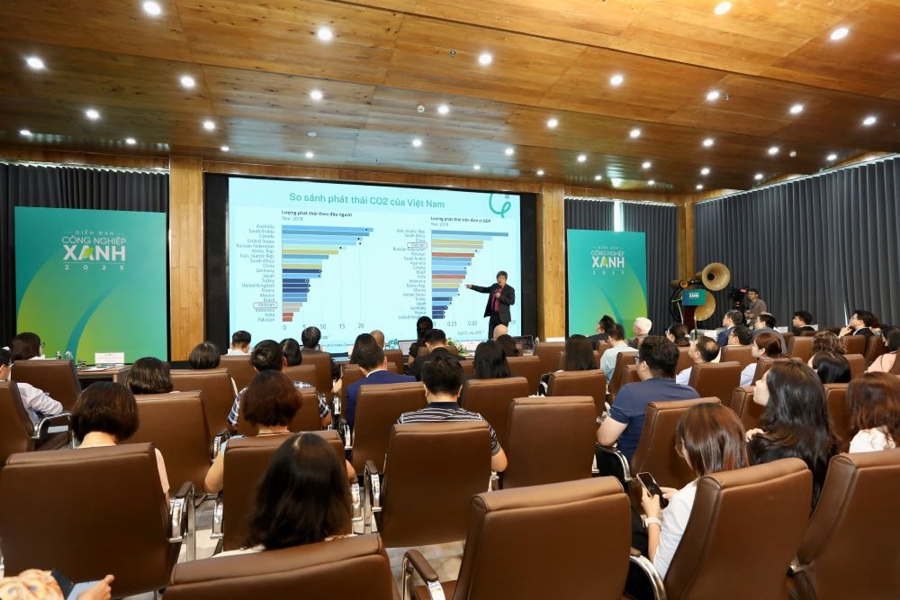
Mr. Hung suggested that, in addition to energy, green industrialization and agriculture should be promoted. For industry, clean and energy-efficient technologies should be implemented.
Regarding agriculture, Mr. Hung acknowledged that it is challenging to reduce emissions due to biological processes inherent in crop and livestock production. However, improvements can be made through circular agriculture. Land use and forestry offer significant opportunities to offset emissions through afforestation, increasing forest cover, and improving land management.
Discussing risk management related to ESG (Environmental, Social, and Governance) in the context of developing the green finance market, Mr. Hung noted that ESG is becoming an essential criterion not only for investors but also in assessing the health and prospects of businesses. ESG provides opportunities for businesses to create added value, such as revenue, profits, and market share, through green investment and products.
However, Mr. Hung pointed out that implementing ESG also carries risks. If not properly managed, ESG can negatively impact assets, reputation, operations, and access to capital. In the past, when building projects, ESG factors were often overlooked in financial analysis and risk assessment. But now, the global trend is to integrate ESG into project evaluation processes. This enhances assessment quality, foresees long-term risks, increases sustainability, and improves operational efficiency.
In practice, two projects starting from similar points may diverge after five to ten years, with the one incorporating ESG performing better. Conversely, projects that disregard ESG often face higher risks, especially in a market and regulatory environment that is becoming increasingly stringent. Therefore, Mr. Hung emphasized: “Businesses should proactively embrace ESG as a risk management strategy and a driver of long-term value creation, not just to keep up with the trend but to survive and thrive in the new global business environment.”
“PVCFC Joins Hands with Ca Mau to Build a New Rural Area: Eradicating Temporary Housing, Illuminating the Countryside.”
Amidst the saline-prone lands, the rural roads illuminated by solar-powered lights, and the beaming faces brimming with joy and contentment – all stand as a testament to the resilient journey of rural development embarked upon by the Ca Mau Petroleum Fertilizer Joint Stock Company (PVCFC). Over the years, PVCFC has steadfastly accompanied the province of Ca Mau in this transformative endeavor.
“CSI 2025: Unveiling Vietnam’s Top 100 Sustainable Enterprises”
The Corporate Sustainability Index (CSI) program in Vietnam for 2025 has entered its tenth year. Organized annually by the Vietnam Chamber of Commerce and Industry (VCCI) under the guidance of the government, this initiative recognizes and applauds businesses that excel in sustainable production and operations.

